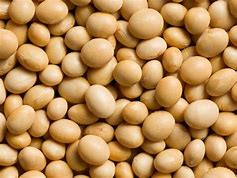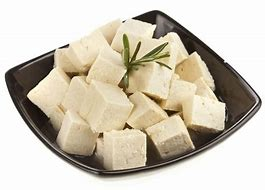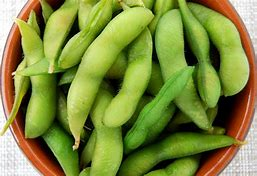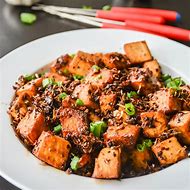 Soybeans are complicated. At one time, they were simply a small bean that contained lots of protein and other nutrients. Farmers in Asia domesticated the bean in 1100 BC, and it contributed to their healthy diet (tofu, tempeh, etc). The U.S. is now a major producer of soybeans; in fact, it is the second largest crop behind corn. However, 30% of our beans go to China. The rest? Our soybeans are used to feed livestock. Our second largest crop feeds livestock and the people in China. Virtually all of the soybean products we eat in the U.S. are made from imported soybeans. The little soybean is now a case study in transportation and agricultural madness. Just so we are clear:
Soybeans are complicated. At one time, they were simply a small bean that contained lots of protein and other nutrients. Farmers in Asia domesticated the bean in 1100 BC, and it contributed to their healthy diet (tofu, tempeh, etc). The U.S. is now a major producer of soybeans; in fact, it is the second largest crop behind corn. However, 30% of our beans go to China. The rest? Our soybeans are used to feed livestock. Our second largest crop feeds livestock and the people in China. Virtually all of the soybean products we eat in the U.S. are made from imported soybeans. The little soybean is now a case study in transportation and agricultural madness. Just so we are clear:
Madness point #1
We grow soybeans (our second largest crop) that get shipped to China. We import soybeans for our own human consumption. The fossil fuels used for this global movement are contributing to global warming.
Madness point #2
We feed an excellent protein source to animals and then eat the animals who are contributing to global warming.
 Those are not the only problems for soybeans. They are also the poster child for the GMO controversy. Most soybeans grown in the U.S. are genetically modified, and some people feel that GMO products are not good for humans while some scientists dispute those findings. Others worry about the loss of non-GMO seed stocks.
Those are not the only problems for soybeans. They are also the poster child for the GMO controversy. Most soybeans grown in the U.S. are genetically modified, and some people feel that GMO products are not good for humans while some scientists dispute those findings. Others worry about the loss of non-GMO seed stocks.
Enter in edamame, the edible seedpods of soy. Our desire for edamame is increasing, but it has the same problem: it is GMO and imported. Edamame, however, has a bright future because some U.S. farmers are interested in creating domestic sources:
“Within the past few years, certain places in the US have begun producing edamame on a higher scale. Arkansas has emerged as the first and leading producer of domestic edamame; Arkansan growers eventually want edamame to be as associated with their home state as apples in New York (or Minnesota, or Washington – but look, we’re from New York and we will vouch for our state’s apples) or corn in Iowa. It’s not just a lark; edamame, in the right climate, is very easy to grow and incredibly healthful .”
Likewise, some soybean farmers are thinking about growing varieties used in making our tofu.
So the simple soybean is also an example of the effect of “demand.” The system will produce what consumers demand, and the demand for soy products for human consumption is driving whole new markets and supplies in the U.S. The soybean teaches us that the consumer, in the end, is the ultimate driver of local, national, and global economies.
 I love tofu, but years ago I stopped eating it because of the GMO controversy. I felt it was time to investigate the situation again, so I shopped around and learned that I can buy non-GMO tofu! But, is it eco-friendly, my primary concern here? It is probably made from imported soybeans, that waved at our own soybeans as they crossed paths in the ocean, so no, it is not eco-friendly at the moment. However, I bought some anyway. I want to contribute to the demand for soybeans that will create domestic sources. We have to seize on opportunities to use our economic clout!
I love tofu, but years ago I stopped eating it because of the GMO controversy. I felt it was time to investigate the situation again, so I shopped around and learned that I can buy non-GMO tofu! But, is it eco-friendly, my primary concern here? It is probably made from imported soybeans, that waved at our own soybeans as they crossed paths in the ocean, so no, it is not eco-friendly at the moment. However, I bought some anyway. I want to contribute to the demand for soybeans that will create domestic sources. We have to seize on opportunities to use our economic clout!
Anyway, I am fairly certain, that when we are forced to move away from animal agriculture (because we won’t do it voluntarily), soybeans will play a huge role in our diets.
So, tofu and other soy products have my seal of approval and I will include them in my “Save the Planet” recipes. A few nights ago I made baked tofu and ate it with brown rice and a creamy curry sauce! Yum, is all I can say. Next, I will try a marinated tofu dish.




